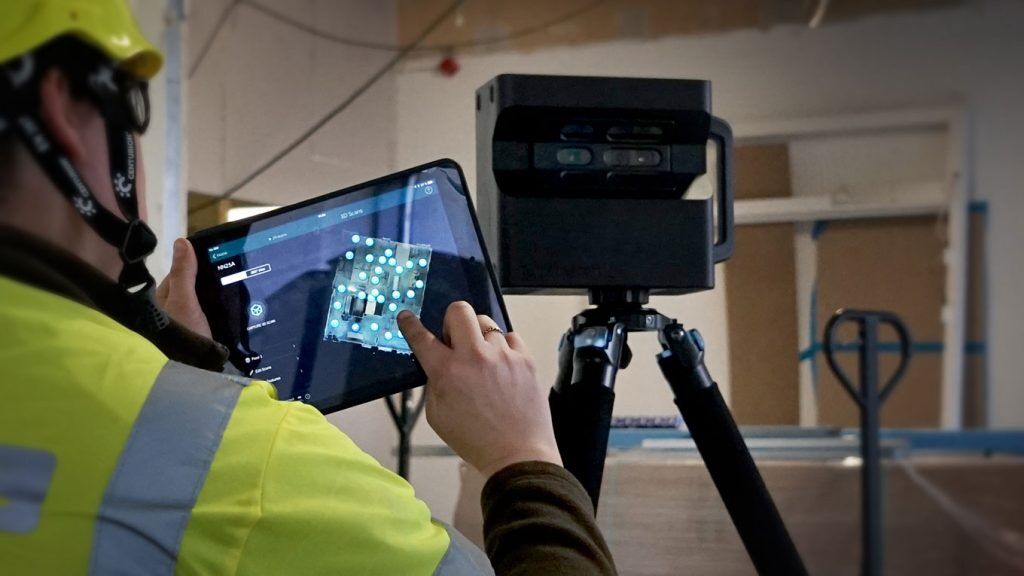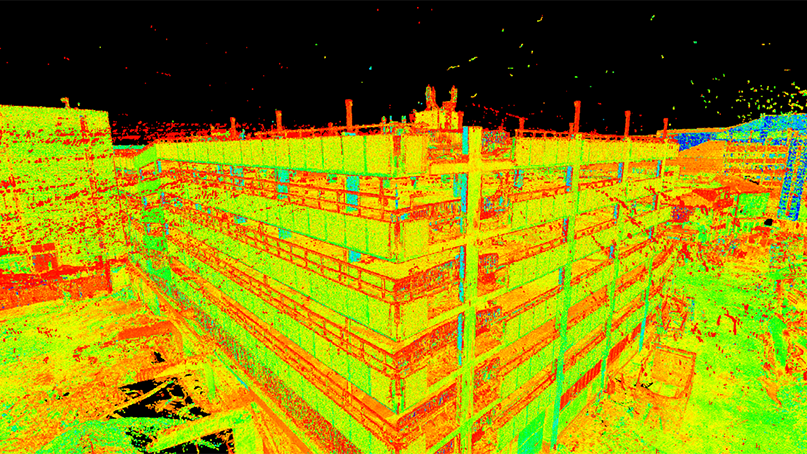Just How 3D Laser Scanning Revolutionizes Architectural Style and Building And Construction Projects
3D laser scanning is transforming the landscape of building layout and building. This modern technology supplies unmatched precision in recording existing atmospheres, which facilitates far better project planning and implementation. It reduces mistakes while improving performance in different stages of growth. The effects for collaboration among architects, engineers, and various other stakeholders are considerable. These innovations open up the door to brand-new design possibilities and cutting-edge options. What lies in advance for this advancing technology?
The Principles of 3D Laser Scanning Technology
Although 3D laser scanning technology may appear facility, its core principles are transformative and simple for architectural style. This innovation uses laser beams to catch exact measurements of physical structures, creating a thorough point cloud that represents the scanned environment. A laser scanner discharges rapid pulses of light, measuring the time it considers the light to return, which allows for the estimation of distances with impressive accuracy.
The resulting factor cloud can be exchanged a 3D design, giving engineers with invaluable aesthetic data. This design allows experts to examine and adjust style components within their tasks, allowing for innovative remedies and enhanced visualization. By employing 3D laser scanning, engineers can much better comprehend the existing conditions of a site, making sure that new styles integrate with their surroundings. This integration of technology into building style notes a significant improvement, cultivating creative thinking and precision in the area.

Enhancing Accuracy and Performance in Architectural Projects
As architectural projects progressively require precision and rate, 3D laser scanning emerges as a critical device in boosting both accuracy and effectiveness. This innovation captures numerous information points in a short duration, producing detailed and accurate 3D versions of existing frameworks. The capability to acquire exact dimensions minimizes the risk of errors during the style phase, enabling architects to imagine their tasks with unequaled clearness.
The quick information collection procedure minimizes the time spent on-site, allowing groups to concentrate on evaluation and style improvements. With real-time information accessibility, adjustments can be made swiftly, advertising a much more streamlined operations. The combination of 3D laser scanning into architectural methods not just enhances dimension accuracy however likewise improves the total task timeline, helping with quicker decision-making. In an industry where accuracy is critical, this modern technology stands as a transformative pressure, boosting the standards of building style and building and construction projects.
Improving Collaboration Among Stakeholders
While standard architectural processes typically include fragmented interaction among stakeholders, 3D laser scanning promotes a much more cohesive collective environment. By giving accurate, high-resolution information, this innovation enables designers, customers, engineers, and professionals to run from a unified factor of referral. The thorough visualizations generated via laser scanning get rid of obscurities and false impressions, ensuring that all events have access to the very same details.
This transparency improves decision-making and encourages timely comments, as stakeholders can quickly picture layout elements and spatial relationships. In enhancement, the combination of 3D scanning data into Structure Info Modeling (BIM) systems even more simplifies collaboration, enabling for real-time updates and modifications. Such smooth interaction not only reduces problems however also increases job timelines, as all stakeholders continue to be aligned throughout the layout and construction phases. Inevitably, 3D laser scanning transforms traditional process into an extra collective and effective procedure, benefiting all celebrations involved.
Unlocking Imaginative Opportunities in Design
By making it possible for architects to imagine complicated spatial connections and detailed details, 3D laser scanning exposes creative possibilities in style. This innovation enables precise mapping of existing environments, allowing engineers to discover cutting-edge principles that might have previously seemed unwise. With very accurate information, designers can explore unique kinds and products, pushing the borders of standard style.
Furthermore, the integration of 3D laser scanning right into the style process fosters partnership among multidisciplinary groups, urging the exchange of ideas and improving creative thinking. The comprehensive visualizations generated by this innovation not only help in recognizing prospective style obstacles but likewise influence options that might not have been taken into consideration. Therefore, engineers can create a lot more vibrant and appealing spaces that resonate with individuals while satisfying practical demands. Inevitably, 3D laser scanning changes the building landscape, empowering designers to recognize their visions with extraordinary accuracy and creativity.
The Future of 3D Laser Scanning in Architecture and Construction
The combination of 3D laser scanning into building style not only improves imagination but likewise sets the phase for its evolving function in the future of architecture and construction. As modern technology breakthroughs, the precision and performance of laser scanning will proceed to boost, making it possible for home builders and engineers to create more complex styles with accuracy - 3D Scanning. Making use of this technology in real-time data collection will helpful hints certainly assist in far better decision-making, minimizing mistakes and improving workflows
Future applications may include augmented and digital reality combinations, allowing stakeholders to visualize tasks in immersive environments. On top of that, as sustainability becomes a top priority, 3D laser scanning will support the advancement of energy-efficient designs by supplying in-depth insights right into existing frameworks. As collaboration amongst various techniques comes to be more crucial, the ability to share accurate 3D designs will promote technology and enhance job outcomes. Eventually, 3D laser scanning will redefine requirements in building design and building and construction methods.
Frequently Asked Questions
What Is the Price of Implementing 3D Laser Scanning Innovation?

The length of time Does a Normal 3D Laser Scanning Job Take?
A typical 3D laser scanning project can take anywhere from a few hours to numerous days, depending on factors such as the project's size, intricacy, and the degree of detail needed for accurate data capture.
What Types of Projects Advantage Most From 3D Laser Scanning?
3D laser scanning advantages various projects, particularly massive buildings, historical remediations, and intricate improvements. It boosts accuracy in dimensions, decreases mistakes, and provides in-depth data necessary for efficient planning and implementation in architectural style and building and construction.

Exist Particular Software Application Programs Required for 3D Laser Scans?
Yes, specific software application programs are essential for refining 3D laser scans. 3D Scanning. Popular choices consist of Autodesk ReCap, Faro Scene, and Leica Cyclone, each offering special functions tailored for read the full info here analyzing and visualizing checked information efficiently in numerous projects
How Does 3D Laser Scanning Effect Environmental Sustainability in Construction?
3D laser scanning enhances environmental sustainability in building by minimizing product waste, enabling exact measurements, and promoting reliable source use. This modern technology enables far better preparation, minimizing the ecological footprint of building tasks with improved accuracy and efficiency.
3D laser scanning is transforming the landscape of building design and construction. 3D laser scanning modern technology might appear complex, its core principles are transformative and straightforward for architectural layout. By enabling engineers to envision intricate intricate information and spatial partnerships, 3D laser scanning exposes imaginative possibilities in layout. The integration of 3D laser scanning right into the layout process cultivates collaboration amongst multidisciplinary teams, motivating the exchange of ideas and boosting creative thinking. The combination of 3D laser scanning into architectural design not just improves imagination but likewise sets the stage for its advancing read this post here role in the future of style and building.